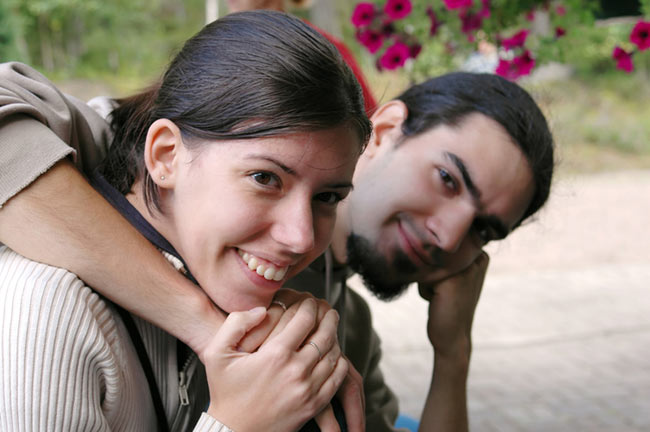
What makes people fall in love with one person and not another?
Philosophers, social scientists and poets have tried to answer that question since time immemorial.
The answer may have a lot to do with brain chemistry, said Helen Fisher, a biological anthropologist at Rutgers University, on Sept. 28 at the Being Human conference, a daylong event focused on the science and mystery of the human experience.
Several brain chemicals, including dopamine and testosterone, play a role in a person's drive toward romance, sex and other rewards, Fisher said. The specific balance of these chemicals in people's brains could shape their personalities and, in turn, the types of people they are drawn to, Fisher said. Sometimes, that means birds of a feather flock together, whereas for others, opposites attract. [10 Surprising Facts About the Brain]
Love addiction
In past research, Fisher found that the brains of the madly in love look markedly different from the brains of those who are not in love.
"Romantic love is akin to an addiction," Fisher said.
Sign up for the Live Science daily newsletter now
Get the world’s most fascinating discoveries delivered straight to your inbox.
For instance, two areas of the brain — the ventral tegmental area, a "dopamine factory" associated with craving and obsession, and the nucleus accumbens, which is strongly associated with addiction — are overactive in those who are love struck, she said.
Soul mates?
In general, people fall for people like themselves: those from the same cultural, religious or socioeconomic background, and level of intelligence or attractiveness. But throughout life, a person may run into hundreds of others who fit that description. So what causes a person to swoon over one person and not another?
To find out, Fisher went through the scientific literature to pinpoint brain chemicals associated with physiological traits, such as high levels of dopamine or testosterone. In a series of studies from 2009 to 2012, she found just four neurochemical systems — those for dopamine, serotonin, testosterone and estrogen/oxytocin — were reliably tied to personality traits.
She then formulated and tested a personality assessment to determine which physiological system is dominant in a given person. Finally, she gave 28,000 people on a dating website this assessment, and then watched to see who they chose.
Brain types
People with different personality types seemed to be drawn to each other. People with active dopamine systems tended to be reward-driven and impulsive, seeking out novelty and experience and getting bored easily. Those with an active dopamine system tended to be curious, energetic and mentally flexible, but not particularly introspective.
"They like their own type," Fisher said of this dopamine group.
Serotonin, meanwhile, was linked with personality types that are less anxious, more sociable and more risk averse. Serotonin-dominant people tended to be conscientious and religious, follow the rules, and prize order and habit. These habit-driven people also flocked to partners just like themselves.
But two groups of participants were drawn to their opposites. Those with testosterone-dominant personalities — who tended to be highly analytical, competitive and emotionally contained — were often attracted to people with personalities associated with high estrogen and oxytocin levels, who tended to be "empathetic, nurturing, trusting and prosocial, and introspective, seeking meaning and identity," Fisher said. The desire went both ways, with the estrogen/oxytocin group being drawn frequently to the testosterone group.
(Though testosterone and estrogen are often considered the male and female hormones, both hormones are present in both sexes.)
But though personality may drive initial love and attraction, Fisher has found that keeping that loving feeling requires one specific skill: maintaining positive illusions about a loved one, or "the simple ability to overlook everything you cannot stand in someone," she said.
Follow Tia Ghose on Twitter and Google+. Follow LiveScience @livescience, Facebook & Google+. Original article on LiveScience.

Tia is the managing editor and was previously a senior writer for Live Science. Her work has appeared in Scientific American, Wired.com and other outlets. She holds a master's degree in bioengineering from the University of Washington, a graduate certificate in science writing from UC Santa Cruz and a bachelor's degree in mechanical engineering from the University of Texas at Austin. Tia was part of a team at the Milwaukee Journal Sentinel that published the Empty Cradles series on preterm births, which won multiple awards, including the 2012 Casey Medal for Meritorious Journalism.









